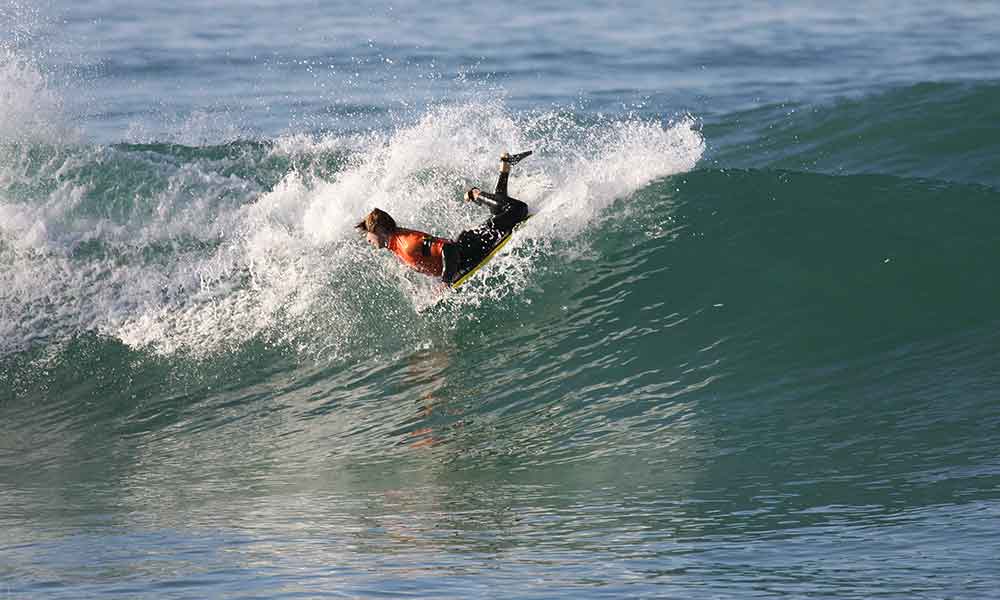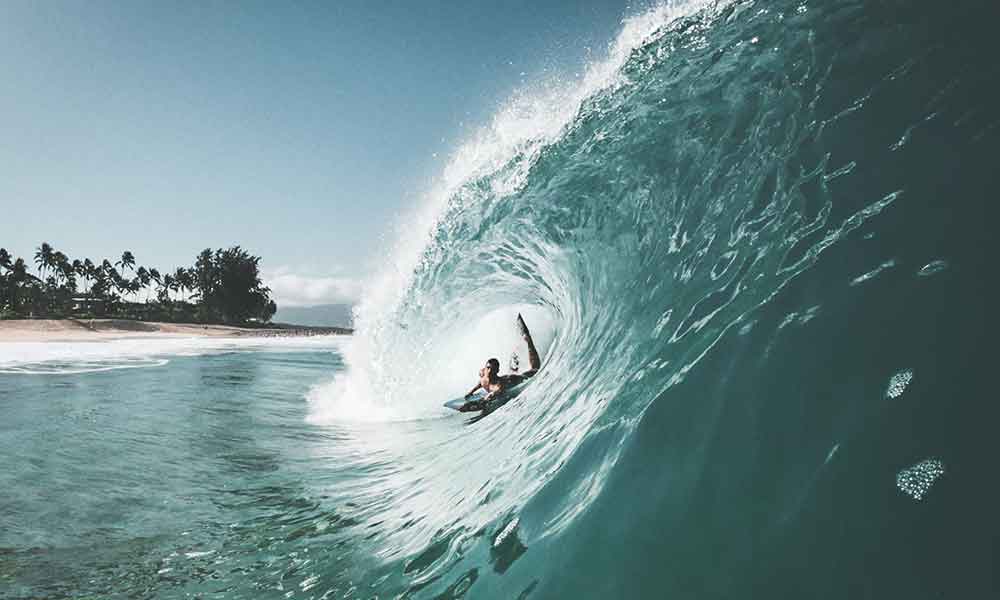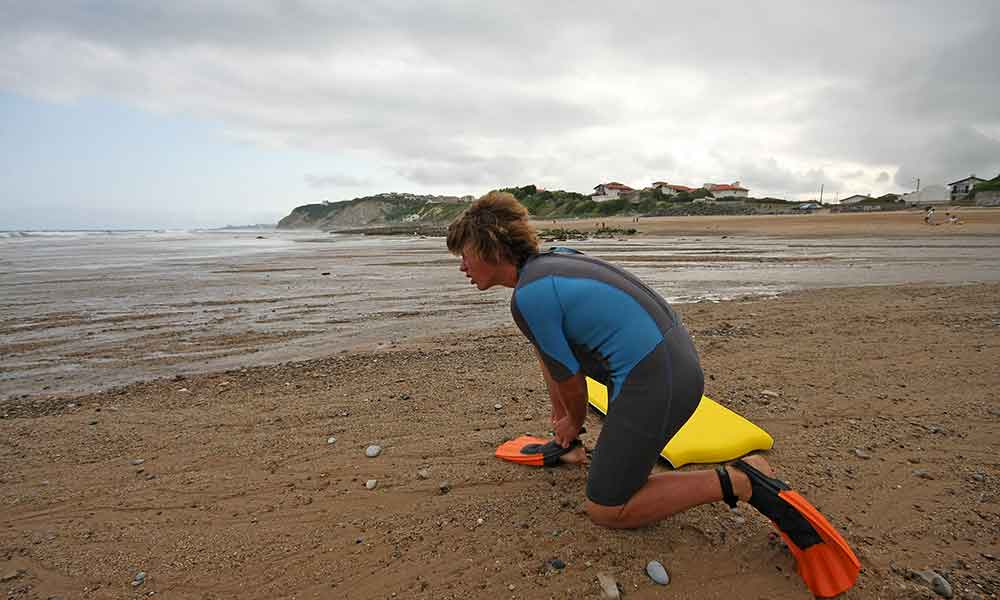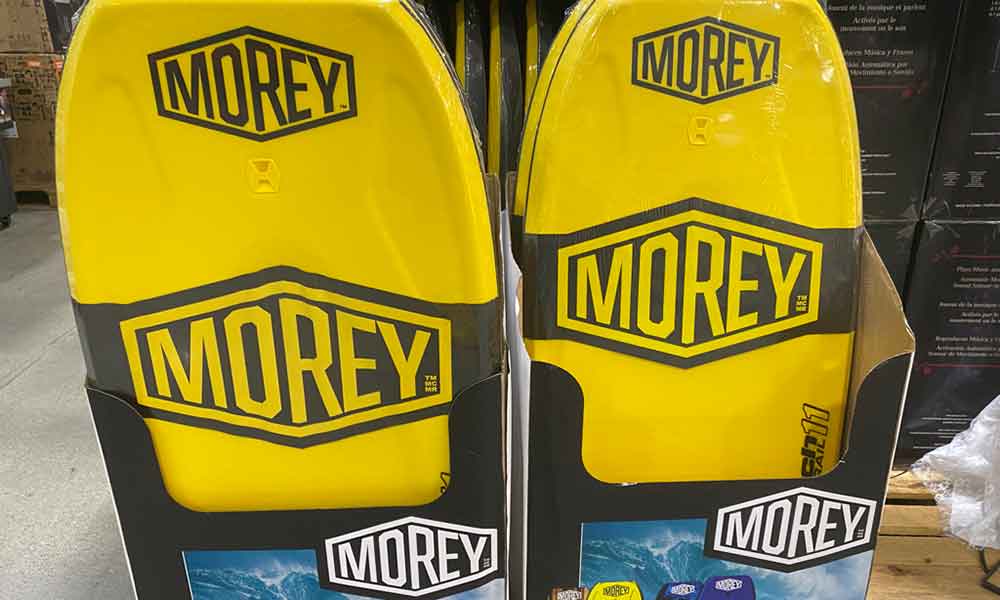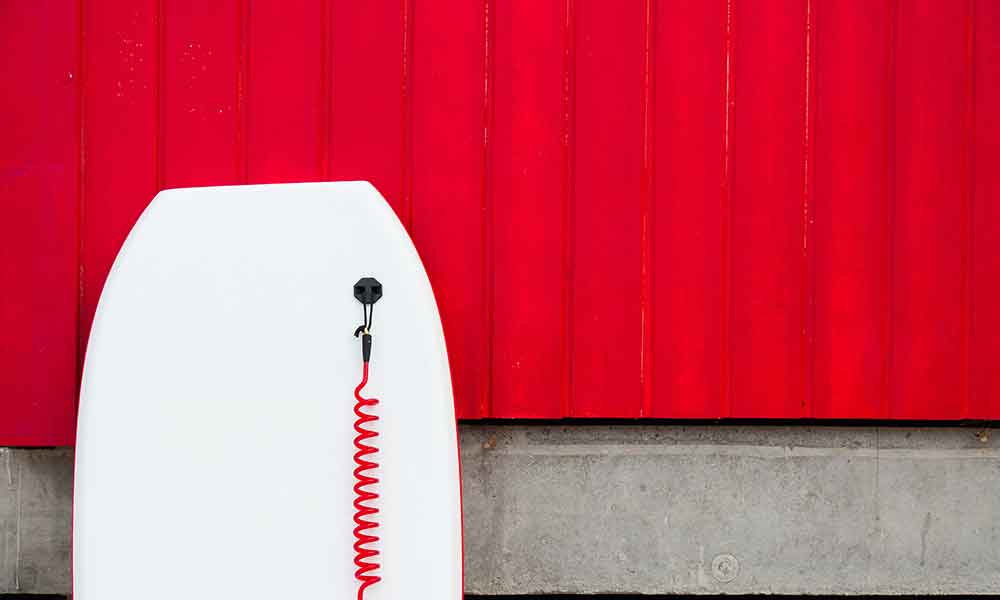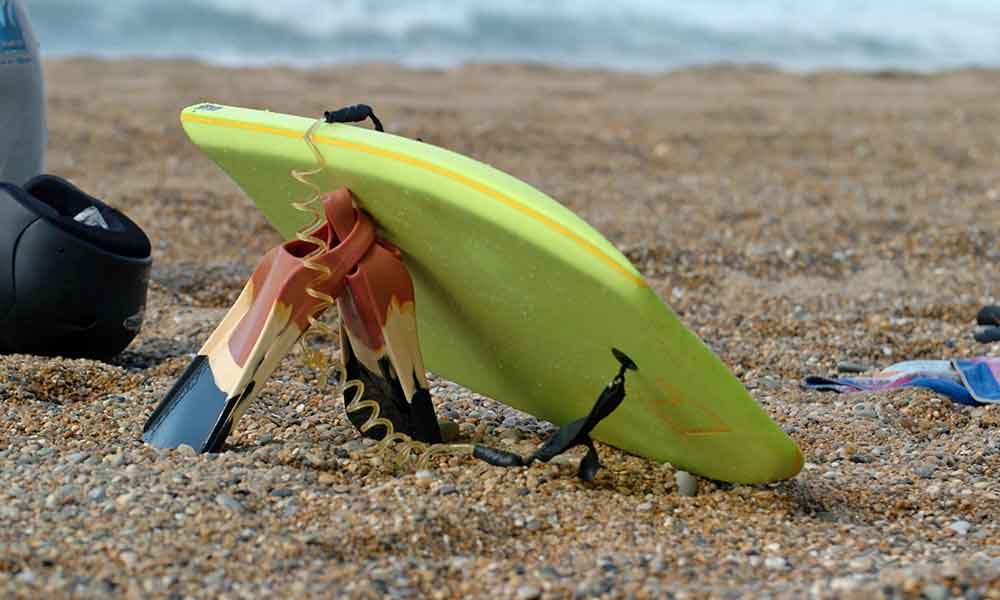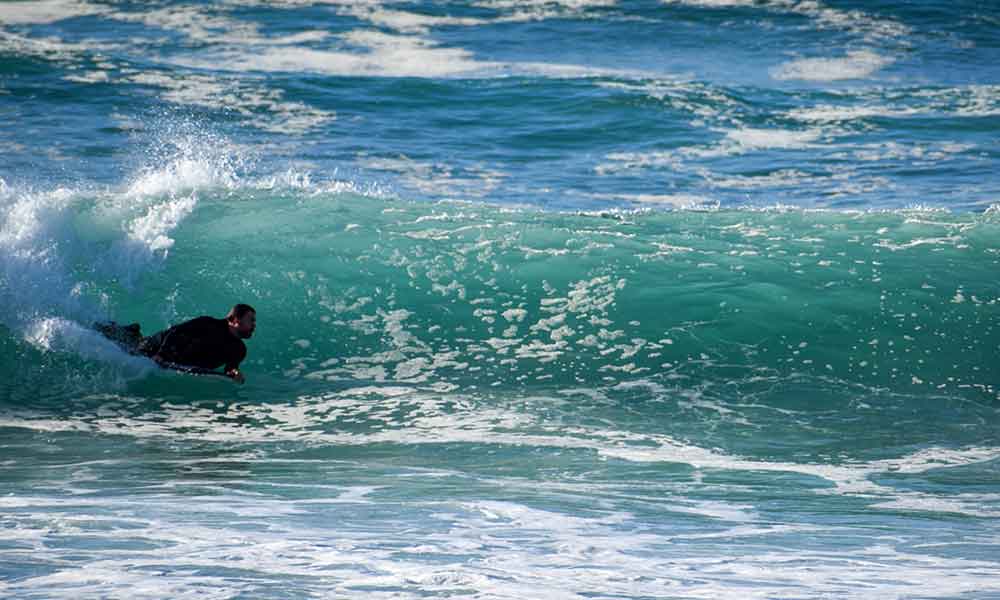The Grom Life is an independent publisher. You will not find paid product promotions or sponsored content on this site. You will find affiliate links which means we may earn a commission if you purchase through these links.
Bodyboarding, like all popular sports, has a unique lexicon that is sure to confuse and fascinate beginners in equal measures. They include terms that are specific to tricks and techniques, as well as slang words.
In this guide, we’ll take a look at both of them.
- Air Forward 360: A 360-degree spin performed by launching from the wave face and completing a full rotation.
- Air Reverse 360: A reverse of the standard Air Forward 360.
- Backflip: An impressive but difficult move whereby the bodyboarder flips backward and lands perfectly on the wave. Backflips are seen in most board sports, and they are always difficult and eye-catching moves.
- Bat Tail: A tail shape that looks like a bat’s tail and is basically a combination of the square tail and the crescent tail.
- Booger: A slang term used to describe a bodyboarder, likely as a result of the Boogie Board.
- Boogie Board: The very first bodyboard was called the Boogie Board and was developed by Tom Morey. These days, the Boogie Board is just another way of saying “Bodyboard”.
- Bumpers: Protective bumpers are applied to the tail and nose of a bodyboard, protecting these key areas and adding more strength and durability to the board.
- Channels: The Channels are located on the underside of the bodyboard and help to “Channel” water along the board.
- Chin Rider: A descriptive name for a bodyboarder due to the fact that they ride with their stomachs pressed to the board and their chin above it.
- Chine: The part of the bodyboard that curves around to meet the rails.
- Crab Dragger: Another name for a bodyboarder.
- Crescent Tail: The most common tail-shape found on bodyboards. A Crescent Tail forms a long “C” shape.
- Deck: The Deck is the upperside of the bodyboard, where the rider lies.
- Devert: A combination of an El Rollo and an Invert.
- Drop-Knee: Bodyboards are traditionally ridden in a prone position. In Drop-Knee boarding, however, riders adopt a kneeling position. It can be a tricky discipline to master, but it adds an extra dimension to the sport of bodyboarding.
- El Rollo: A popular trick where the boarder rolls over the lip of the wave and then lands on the flat water.
- Esky Lidder: Aussie slang for a bodyboarder, typically in a derogatory context.
- Flogged: Refers to a wipeout.
- Floppo: Another word for an “El Rollo”.
- Foreskin: An imaginative expression that refers to a bodyboarder who is constantly pulling back on the wave.
- Frontflip: A Frontflip is a complete rotation in a forward motion.
- Guys on Trays: Used to denote bodyboarders in general, as they look like guys riding trays over the water.
- Hand Dragger: A term used to describe a bodyboarder, likely due to the fact that they hang their hands over the rails.
- Kegged: When you are barreled by a wave.
- Lid Skidding: When a rider skims over the board, leaving it behind as they continue to ride the water like a bodysurfer.
- Nose: The front of a bodyboard.
- One for the Boys: An intentional mistake performed for the amusement of onlookers.
- OTB: An abbreviation of “Out The Back”.
- Prone: A discipline of bodyboarding in which the rider lies flat on his or her stomach.
- Rails: The Rails are the edges of the board.
- Reverse Spin 360: A reverse version of the Spin 360.
- Scorpioned: A heavy wipeout that results in the rider’s swim fins hitting them in the back of the head.
- Shark Biscuits: Another name for a bodyboarder, as they are said to be easy targets for sharks. The same could be said for all water sports though, as well as open-water swimming. There is a risk of shark attacks, but it’s very low.
- Slither: To ride quickly on a bodyboard.
- Spin 360: A full rotation spin performed on the face of the wave.
- Stand-Up: A discipline performed by standing on the board.
- Stringer: The stringer is a piece of material that runs through the center of the board and adds some additional strength and performance.
- Swim Fins: A type of fin worn on the feet to give the bodyboarder extra thrust and control in the water.
- Tail: The back end of a bodyboard.
- Tupperware: A strong and heavy wave that should only be tackled by experienced bodyboarders.

